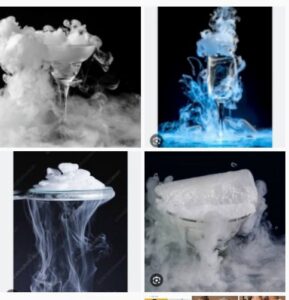
Dry ice safety is paramount to reduce the risk of injury during the various uses of dry ice as there are potential hazards associated with the use, handling and shipping of dry ice.
In this article we will explore the uses of dry ice, the dangers of dry ice, and the solutions Edinburgh Sensors can provide for dry ice safety.
WHAT IS DRY ICE?
Dry ice is the cooled and condensed form of the gas carbon dioxide. It has many applications in the medical, food and beverage, and research industries however there are hazards that must be considered when planning dry ice handling, use or shipping.
Dry Ice Shipping and Handling
Using dry ice for shipping can be much more cost effective than having a fully refrigerated transport system. Food, pharmaceutical and other temperature sensitive products can be packed under dry ice in insulated boxes to keep them frozen during transportation. Another advantage of using dry ice during transportation and storage is there is no moisture left as the dry ice does not melt, keeping moisture sensitive goods free from water.
For short term storage, dry ice blocks can be suspended and as it sublimes, the vapour will cool the products below.
DRY ICE USES
Food Industry
Dry ice has a surface temperature of -78 °C and because it sublimes at room temperature (changes from solid form to gas without any liquid phase), there is no residue left over, making it ideal for use in the food industry. Dry ice is used for freezing at ultra-low temperatures or freeze drying without using water to preserve food, extending its shelf life. Dry ice can also be used for keeping foodstuff cool, such as on aircraft where refrigeration systems are not available. In recent years, dry ice has also been used in restaurants and bars to give more theatrical presentation of food and drinks.
MEDICAL AND PHARMACEUTICALS Dry Ice Applications
Dry ice is often used in the transportation of storage of biological samples and medicines. Dry ice is much colder than ice, remains colder for longer and does not melt. These properties are ideal for transporting pharmaceutical products such as vaccines that have to be kept at very cold temperatures before use to maintain their potency. Biological samples such as blood and tissue must also be kept at ultra-low temperatures during storage. This stops all biological activity so that then they need to be used again, they can be warmed and have the same functions as when they were first frozen. This is important for blood banks, organ donation and researching biological samples.
SPECIAL EFFECTS
Photography, film and theatre all make use of dry ice for special effects. The sublimation creates excellent visual effects. Fog and smoke machines can also be used at parties or to create a spooky atmosphere at Halloween.
Dry ice uses in the food, pharmaceutical, shipping and theatre industries | Dry ice safety
IS DRY ICE DANGEROUS?
There are two main hazards associated with dry ice: cold burns and asphyxiation.
As the temperature of dry ice is -78°C, incorrect dry ice handling comes with a risk of cold burns and frostbite. Users should always wear appropriate gloves when handling dry ice and never touch dry ice with bare skin.
The second dry ice hazard is a ASPHYXIATION
. As CO2 sublimes at room temperature, in small or poorly ventilated areas there is a risk of CO2 gas build up. Exposure to high concentrations of CO2 can lead to death, so it is vital that dry ice safety precautions are in place to avoid this.
Dry Ice Safety increased by wearing gloves and using CO2 Sensors
DRY ICE SAFETY
Wearing appropriate personal protective equipment can drastically reduce the risk of cold burn or frostbite, however reducing the risk of asphyxiation involves some more precautions.
Users should avoid dry ice handling, storage or applications in small, poorly ventilated areas. CO2 levels should be monitored in all areas where dry ice is being handled, used, shipped or stored. Ensuring that CO2 concentrations remain within safe limits is the best way to avoid serious health implications from carbon dioxide poisoning.
Dry Ice Safety and Edinburgh Sensors
Edinburgh Sensors provides a number of solutions for carbon dioxide detection to keep you safe when handling, storing or shipping dry ice.
To maximise dry ice safety, our Guardian NG Gas Monitor is ideal for detecting CO2 levels to ensure they remain within safe limits.
Dry Ice Safety achieved using the Guardian NG gas monitor
The Guardian NG offers high accuracy detection along with true volume percent readout over a wide range of pressures (pressure compensated) for use in different environments. It is also possible to keep track of readings over time with the possibility to access previous readings over user-defined period of time.
If you would like to hear more about how Edinburgh Sensors can help with your dry ice safety protocols, contact our sales team who will be happy to assist you.









